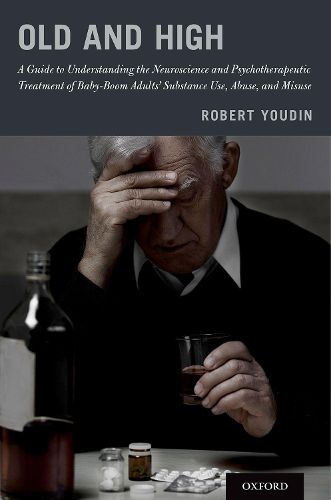Readings Newsletter
Become a Readings Member to make your shopping experience even easier.
Sign in or sign up for free!
You’re not far away from qualifying for FREE standard shipping within Australia
You’ve qualified for FREE standard shipping within Australia
The cart is loading…






Despite the stereotype of older adults primarily abusing alcohol, clinical practice insights indicate that the baby-boom generation frequently abuses the same substances as younger adults-including alcohol, benzodiazepines/z-drugs, cannabis, opioids, tobacco (nicotine), and neurostimulants. Old and High exposes this hidden epidemic and emphasizes the importance of understanding psychotropic substance abuse as a community health problem. Further, the book identifies the unique cultural values, social values, and risks that baby-boom adults have with respect to substance abuse and misuse to give students and clinical professionals in psychology, social work, gerontology, nursing, and medicine a foundation for working with this population. Readers will learn how to integrate current neuroscience findings with contemporary psychotherapy techniques and harm-reduction interventions to help older adults achieve successful recovery from substance abuse problems. Considering that we will likely observe an increase in rates of substance abuse as the baby-boom generation continues to age-and live longer than previous groups-there will be a major need to better understand the unique risk factors and treatment approaches for working with older adults.
$9.00 standard shipping within Australia
FREE standard shipping within Australia for orders over $100.00
Express & International shipping calculated at checkout
Despite the stereotype of older adults primarily abusing alcohol, clinical practice insights indicate that the baby-boom generation frequently abuses the same substances as younger adults-including alcohol, benzodiazepines/z-drugs, cannabis, opioids, tobacco (nicotine), and neurostimulants. Old and High exposes this hidden epidemic and emphasizes the importance of understanding psychotropic substance abuse as a community health problem. Further, the book identifies the unique cultural values, social values, and risks that baby-boom adults have with respect to substance abuse and misuse to give students and clinical professionals in psychology, social work, gerontology, nursing, and medicine a foundation for working with this population. Readers will learn how to integrate current neuroscience findings with contemporary psychotherapy techniques and harm-reduction interventions to help older adults achieve successful recovery from substance abuse problems. Considering that we will likely observe an increase in rates of substance abuse as the baby-boom generation continues to age-and live longer than previous groups-there will be a major need to better understand the unique risk factors and treatment approaches for working with older adults.